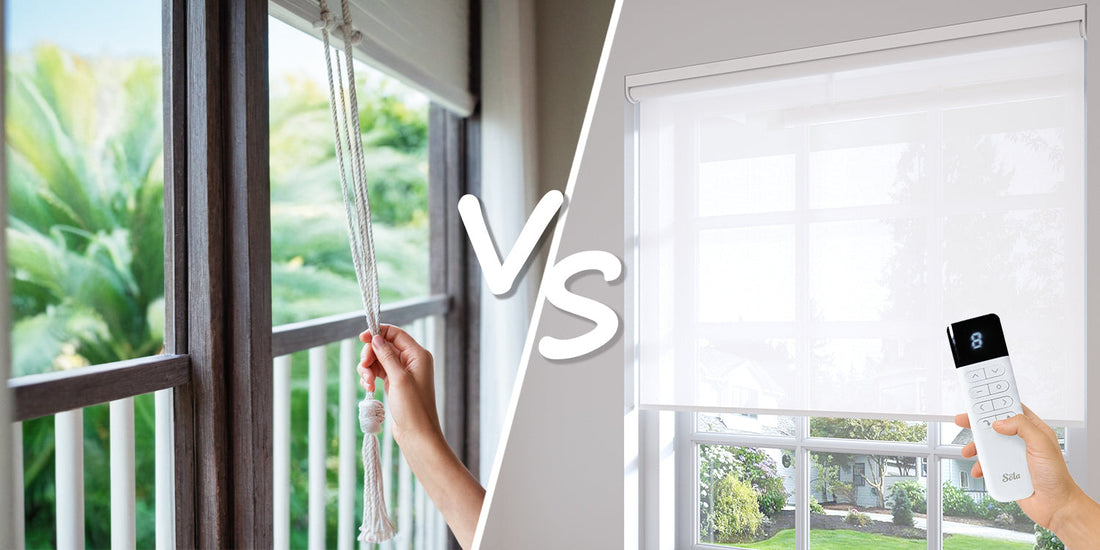

1. Operation & Convenience

Solar Powered Roller Shades
- Hands-Free Control: Adjust shades via smartphone app, or voice commands (Alexa/Google Home).
- Self-Charging System: Integrated solar panels power the motor, eliminating manual operation.
- Perfect Alignment: Motorized mechanisms ensure smooth, even movement every time.
Traditional Corded Blinds
- Manual Effort: Pull cords or twist wands to raise/lower blinds, risking uneven positioning.
- Tangled Cords: Frequent adjustments lead to knotting and wear.
- Limited Accessibility: Hard to reach for high windows or mobility-impaired users.
Key Advantage: Solar shades offer "set-and-forget" convenience, ideal for smart homes and multi-story buildings.
2. Safety: A Critical Divide

Solar Powered Roller Shades
- Cordless Design: No dangling cords, making them 100% child- and pet-safe (CPSC reports 30,000 annual cord-related accidents).
Traditional Corded Blinds
- Strangulation Risk: Exposed pull cords pose a deadly danger, especially to young children.
- Retrofit Challenges: Cordless kits often require costly modifications.
Data Spotlight: Since 2022, 28 U.S. states have enacted corded blind safety bans in daycare centers and public housing.
3. Energy Efficiency & Cost Savings

Solar Powered Roller Shades
- Zero Grid Dependency: Solar panels generate 50-100Wh/day (enough for 10+ daily cycles).
- HVAC Savings: Reflective fabrics block 90% solar heat gain, cutting AC costs by $150+/year (U.S. DOE).
- No Battery Costs: Built-in batteries last 5+ years vs. disposable AA batteries.
Traditional Corded Blinds
- Passive Design: No energy-saving tech beyond basic light blocking.
- Hidden Costs: Frequent cord replacements and professional repairs.
ROI Example: A $400 solar shade pays for itself in 2.5 years through energy savings (based on average U.S. kWh rates).
4. Aesthetic & Functional Flexibility

Solar Powered Roller Shades
- Sleek Profiles: Built-in motor and hidden solar panel (mounted on window edges).
- Custom Fabrics: Choose UV-blocking, blackout, or zebra-style dual layers.
Traditional Corded Blinds
- Bulky Mechanisms: Visible cords and tilt rods disrupt minimalist decor.
- Limited Styles: Few smart-ready options beyond basic vinyl or wood.
